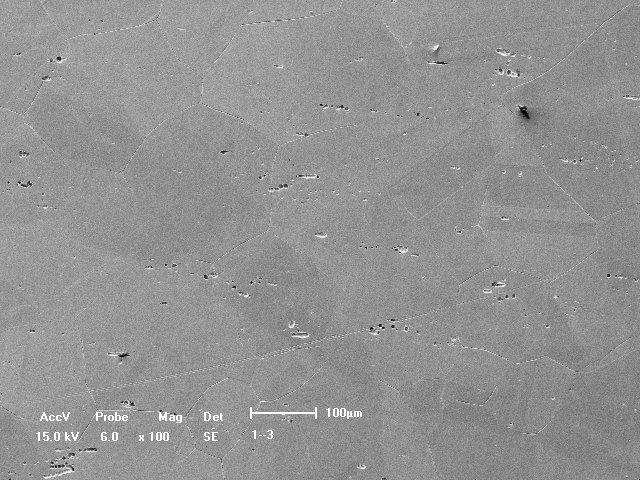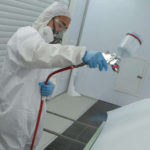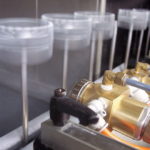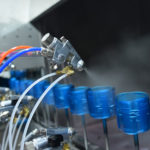Many people asking: I want to do stainless steel coating, how to treat it, what paint to use, how to apply it?
Stainless steel corrosion phenomenon mostly occur with seawater contact. Then what kind of coating do we use? What should I pay attention to during painting? What abrasive is used for surface treatment? Or what is the best way to deal with it? To what extent is it appropriate to handle it? What processing tools should be used for local processing?
- Non-metallic abrasives should be used for surface treatment. The abrasive should be free of chlorine and sandblasted to increase roughness.
- can not use zinc-containing primer, the chloride ion content in primer should be controlled, should not contain corrosion inhibitors commonly used in carbon steel anticorrosive primer to promote stainless steel corrosion;
- the paint is mostly based on epoxy.
Stainless steel is not working well in seawater for long time. For example, martensitic stainless steel is guaranteed for 3 months. Ferritic stainless steel, slightly better, less than a year. Austenite is best, 2mm thick perforated in a year. Moreover, stainless steel also has the problem of stress corrosion cracking, namely SCC. Therefore, try not to use stainless steel in seawater. In stainless steel painting process, halogen-free coating can be used, make sure do not use metal abrasives during treatment process, the abrasives should not contain chlorine, and the coatings should not contain chlorine.
 Stainless steel is very dangerous in seawater and has great potential for perforation. Therefore, when making stainless steel, you must forget the word stainless. Stainless steel is rust in seawater, so where you have to use stainless steel, for example some chemical tankers use stainless steel as cargo tanks, the part of its ballast tanks are stainless steel. This part must be done with caution! Chlorine-free abrasives are not used because stainless steel is easily perforated in the presence of chloride ions.
Stainless steel is very dangerous in seawater and has great potential for perforation. Therefore, when making stainless steel, you must forget the word stainless. Stainless steel is rust in seawater, so where you have to use stainless steel, for example some chemical tankers use stainless steel as cargo tanks, the part of its ballast tanks are stainless steel. This part must be done with caution! Chlorine-free abrasives are not used because stainless steel is easily perforated in the presence of chloride ions.
The excellent corrosion resistance of stainless steel is due to the formation of an invisible oxide film on its surface, making it passive. The passivation film is formed as a result of the reaction of the steel with oxygen when exposed to the atmosphere or due to contact with other oxygen-containing environments. If the passivation film is destroyed, the stainless steel will continue to corrode. In many cases, the passivation film is only destroyed on the metal surface and small area. The effect of the corrosion is to form fine holes or pits, resulting in irregularly distributed small pit-like corrosion on the surface of the material.
Pitting corrosion is likely to be the presence of chloride ions in combination with depolarizers. Pitting corrosion of passive metals such as stainless steel is often caused by localized destruction of the passivation film by some aggressive anions, and protection of passive states with high corrosion resistance. An oxidizing environment is usually required, but this is also the condition for pitting. The medium in which pitting occurs is a heavy metal ion such as FE3+, Cu2+, Hg2+ or a chloride solution containing Na+, Ca2+ alkali and alkaline earth metal ions of H2O2, O2, etc. in a C1-, Br-, I-, Cl04-solution.
Therefore, abrasive or coating materials in contact with stainless steel should be free of halogen ions, including halogenated materials that may be converted to form halogen ions.
Zinc-rich paint cannot be used on stainless steel. The problem of zinc is easy to see by welding. Zinc will melt during the welding process, or stainless steel may be exposed to zinc melt in other cases. The intergranular diffusion of stainless steel penetrates, causing selective corrosion to occur along the grain boundaries. This is called zinc crisp (zincembrittel).
The zinc-containing primer referred to metal zinc (zinc powder). The metal zinc generates active hydrogen during corrosion, which can activate and reduce the base passivation film and accelerate corrosion; on the contrary, zinc chrome yellow can dissolve hexavalent chromium. The surface of the substrate is passivated to reduce corrosion, but there is a tendency for pitting corrosion in seawater due to the presence of chloride ions.
Above is general introduction and analyzation of stainless steel coating treatment in extreme environment for high end application. If it’s only regular coating on daily stainless steel products like water pot or houseware etc, we have wide choice as it’s mostly for decoration purpose. Our automatic spray paint machine can well handle most of your requirements.




